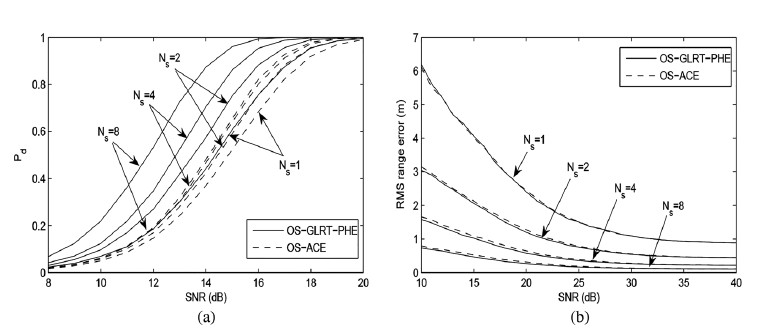Keywords: Adaptive radar detection, constant false alarm rate, generalized likelihood ratio test, oversampling, partially homogeneous environment
Adaptive radar detection of targets embedded in Gaussian disturbance with unknown spectral properties is a classic task in radar applications, having received an increasing attention in recent years. The existing detectors, however, are based on the assumption that there is no spillover of the target energy to adjacent matched filter returns. In fact, such assumption is not always reasonable, since there is no guarantee that the samples at the matched filter output is exactly taken at the peak of the target return.
HAO Chengpeng, MA Xiaochuan, and HOU Chaohuan from the State Key Laboratory of Acoustics, Institute of Acoustics, Chinese Academy of Sciences, Beijing, China, and Orlando Danilo and G. Foglia from Elettronica S.p.A., Roma, Italy study the problem of how to improve performance of detection and range estimation for radar system in Partially Homogeneous Environment (PHE) recently. They investigate the adaptive detection and range estimation for point-like targets buried in partially homogeneous Gaussian disturbance with unknown covariance matrix. The spillover of target energy is exploited jointly to consecutive range samples and the oversampling of the received signal. In this context, a detector is designed relying on the Generalized Likelihood Ratio Test (GLRT).
Remarkably, the new decision scheme ensures the Constant False Alarm Rate (CFAR) property with respect to the unknown disturbance parameters. The performance of new receivers is validated with both simulated data and real recorded data. Specifically, the numerical examples on simulated data show that the proposed GLRT-LC-PHE guarantees a superior detection performance than its counterpart, oversampled Adaptive Coherence Estimator (OS-ACE), as shown in Fig. 1(a). As to localization capability, the GLRT-LC-PHE has the same estimation capabilities of the target position as the OS-ACE, as illustrated in Fig. 1(b).
All above results show that oversampling is a suitable means to enhance radar system performance even when a scale mismatch between primary and secondary data is present. The superior performances of the GLRT-LC-PHE are confirmed by the analysis on recorded IPIX radar data, see Fig. 2.

Fig. 1. Performance of the OS-GLRT-PHE and OS-ACE with simulated data (Image by HAO)

Fig. 2. Performance of the OS-GLRT-PHE and OS-ACE with real data (Image by HAO)
References:
HAO Chengepeng, Orlando Danilo, G. Foglia, MA Xiaochuan, HOU Chaohuan. Adaptive Radar Detection and Range Estimation with Oversampled Data for Partially Homogeneous Environment. IEEE SIGNAL PROCESSING LETTERS (vol. 22, no. 9, pp. 325-329, September 2015). DOI: 10.1109/LSP.2014.2301763
Contact:
HAO Chengpeng
Institute of Acoustics, Chinese Academy of Sciences, 100190 Beijing, China
Email: haochengp@mail.ioa.ac.cn


